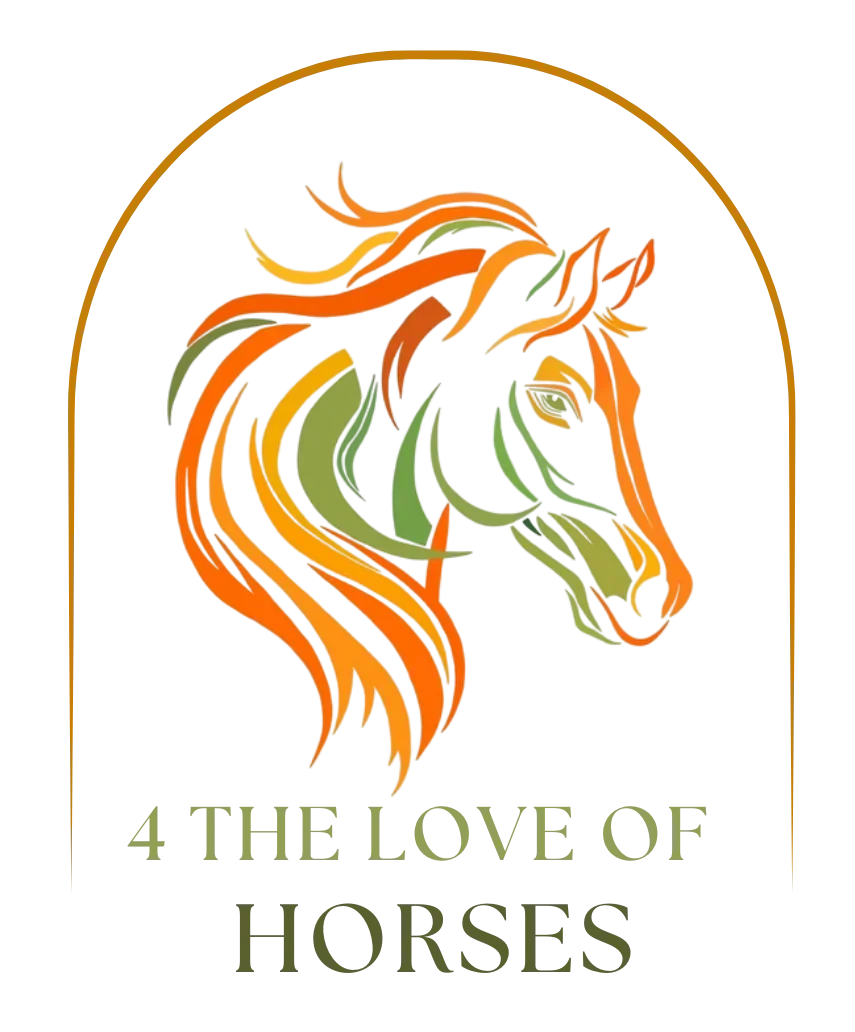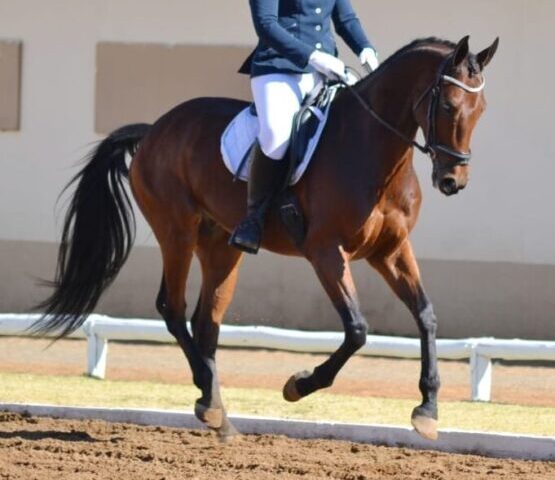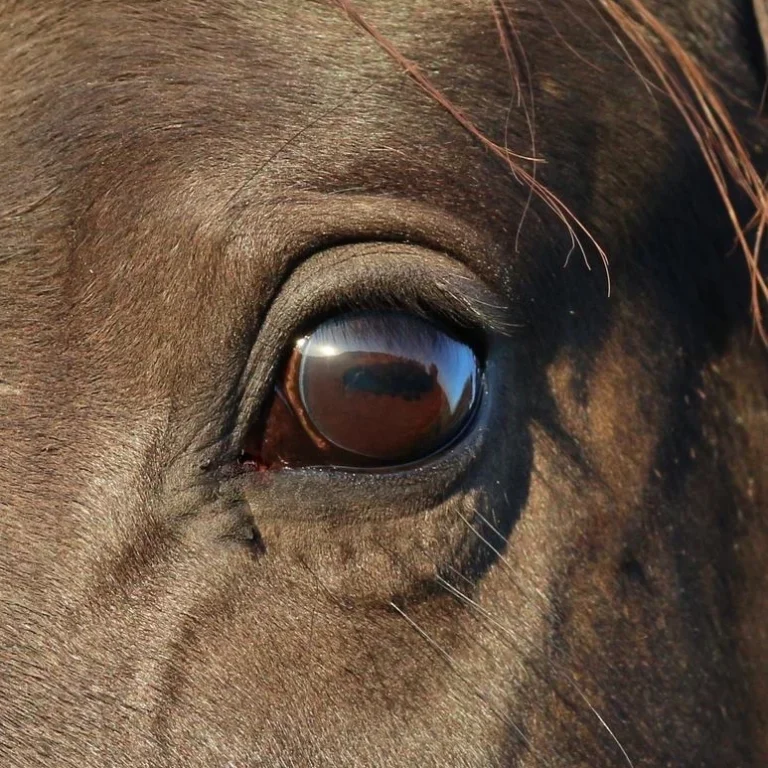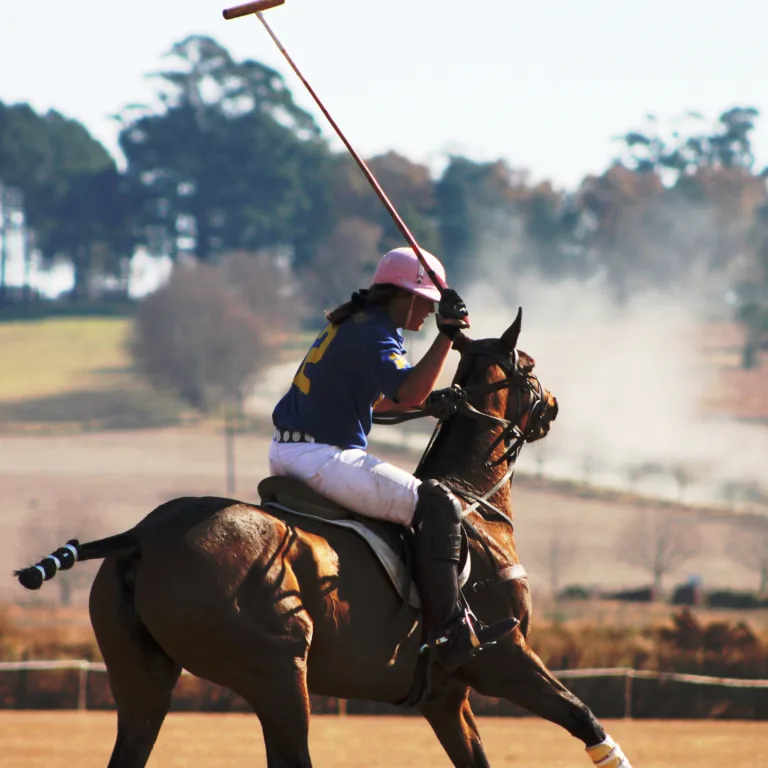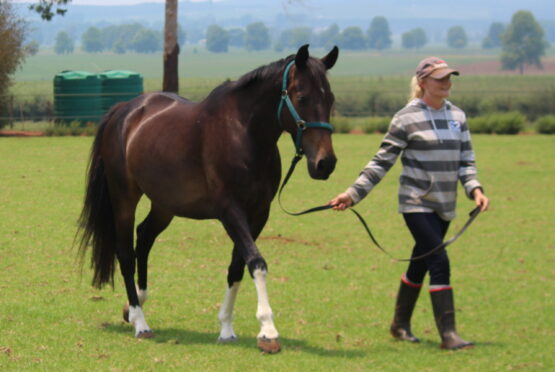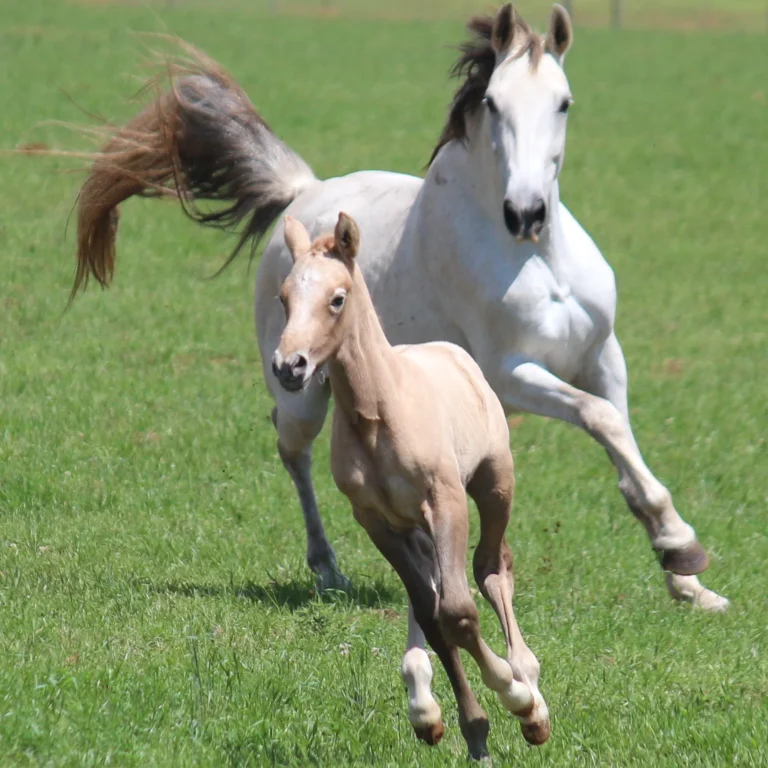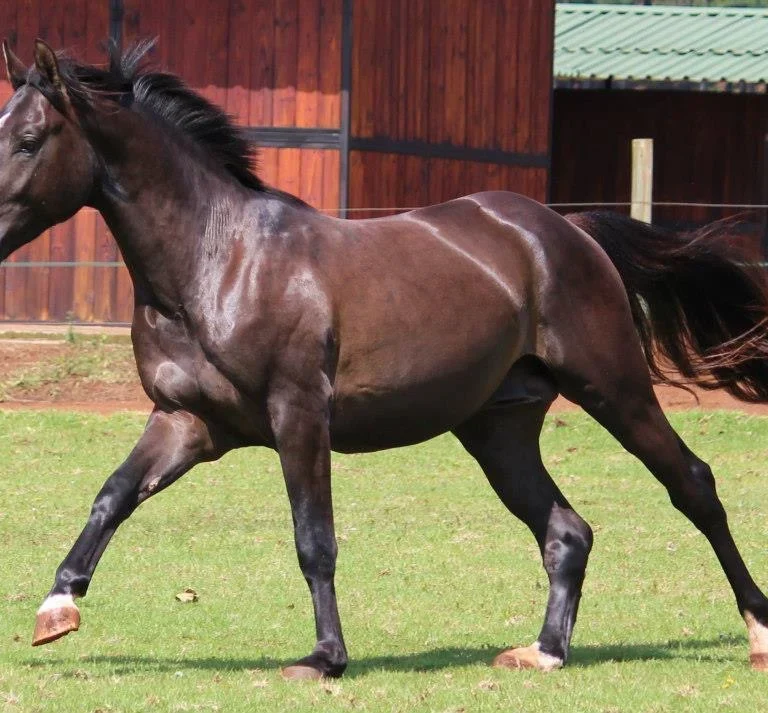Mastering Your Dressage Test: Tips and Tricks for a Winning Ride
The white-bordered rectangle of the dressage arena has long been both a place of elegant expression and quiet anxiety for riders at all levels. Whether you’re preparing for your first Training Level test or fine-tuning your Grand Prix performance, dressage tests represent the ultimate measurement of harmony between horse and rider – a choreographed conversation set to invisible music.
Dressage tests are unique in the equestrian world, requiring not just athletic ability, but precision, memory, timing, and presentation. They demand that both horse and rider perform specific movements at designated markers while maintaining rhythm, suppleness, contact, and impulsion throughout. It’s a tall order, even for the most experienced competitors.
What many riders don’t realize is that mastering a dressage test isn’t simply about practicing the movements until they’re perfect. It’s about understanding the nuances of test riding as its own distinct skill. The difference between a good test and a winning test often comes down to small details: a more square halt, smoother transitions, or better preparation before movements. These seemingly minor improvements can transform your scores from satisfactory to spectacular.
In this guide, we’ll explore the art and science of test riding from preparation to execution, offering practical strategies that can be applied regardless of your current level. Whether you’re looking to break into the winner’s circle or simply improve your personal best, these tips and techniques will help you navigate the dressage arena with greater confidence and competence. The path to dressage excellence is paved with thoughtful preparation, deliberate practice, and a touch of showmanship – let’s begin the journey.
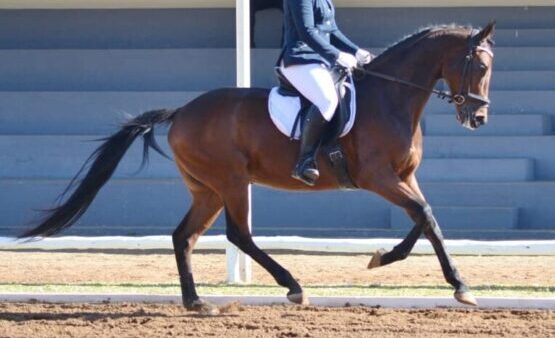
Before the Test: Preparation Phase
The foundation of a winning dressage test is built long before you enter at A. Thorough preparation creates confidence, consistency, and the mental space needed to handle the inevitable challenges of test day.
Understanding Your Test Thoroughly
Memorization Beyond Basics: While knowing the sequence of movements is essential, true mastery comes from understanding the purpose behind each element. Don’t just memorize “20-meter circle at B”; understand that this circle might be testing your ability to maintain bend while preserving impulsion.
Walk the Test: Whenever possible, physically walk through your test in the arena. This creates muscle memory and spatial awareness that translates to better accuracy when mounted. Count your steps between markers to develop an intuitive feel for distances.
Create Mental Checkpoints: Break your test into smaller segments with clear transition points. Many riders find success by thinking of their test as 3-4 “chapters” rather than 15-20 individual movements. This approach reduces mental load during performance.
Training Strategically
Analyze Your Weaknesses: Be honest about which test elements need the most improvement. Video your schooling sessions or ask a trainer to identify areas where scores are likely to be lower.
Targeted Movement Practice: Rather than riding through the entire test repeatedly, isolate challenging elements for focused practice. If your leg yields lack crossing, dedicate specific sessions to improving lateral responsiveness.
Practice Entry and Final Halt: These first and last impressions significantly impact judges’ perception. Develop a consistent routine for entering the arena and halting squarely, practicing until these become second nature.
Create “Pressure Scenarios”: Simulate test conditions by having friends watch you ride, setting a timer, or practicing in busier environments. This builds resilience for the inevitable distractions of show day.
Rider Preparation
Visualization Techniques: Spend time away from the barn mentally riding through your test. Elite riders often visualize not just the movements, but also their breathing, the feel of each transition, and their response to potential challenges.
Physical Conditioning: Your fitness directly impacts your horse’s performance. Core strength, flexibility, and stamina are particularly important for maintaining correct position throughout your test.
Position Refinement: Work with a ground person or use mirrors to perfect your position during test movements. Small adjustments in your alignment can significantly improve your horse’s balance and expression.
Develop Test-Specific Cues: Ensure your aids for test movements are clear, consistent, and as subtle as possible. The goal is communication that appears effortless to observers while being unmistakable to your horse.
The preparation phase is where winners separate themselves from competitors. By approaching your training with purpose, precision, and patience, you build a foundation that allows both technical excellence and artistic expression to shine through on test day.
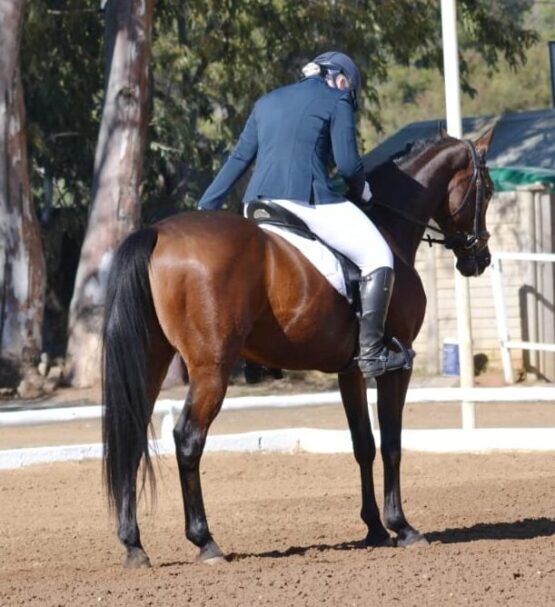
The Day Before and Morning Of
The final 24 hours before your test can significantly impact your performance. This critical window is about fine-tuning rather than teaching, and setting yourself up for success through thoughtful preparation.
Final Practice Approaches
The Perfect Final Ride: Your last schooling session should be confidence-building rather than challenging. Focus on movements your horse performs well, with only brief work on test elements that need reinforcement. End on a positive note that leaves both you and your horse feeling accomplished.
Less is More: Resist the urge to drill difficult movements. Overtraining creates tension and fatigue that will carry into test day. A 30-minute session emphasizing relaxation and responsiveness is far more beneficial than an exhaustive 60-minute workout.
Test Fragments, Not Full Runs: Rather than riding through the entire test repeatedly, practice short sequences that link 2-3 movements together. This maintains your horse’s interest and prevents anticipation issues common when tests are over-rehearsed.
Horse Care and Preparation
Physical Readiness: Ensure your horse receives appropriate care to be at their physical best. This might include a light massage, proper hydration, electrolytes if needed, and any usual supportive therapies your horse benefits from.
Grooming Strategy: Plan your show grooming routine in advance. Lay out all supplies the night before and allow extra time for inevitable delays. Remember that a well-turned-out horse creates a positive first impression before a single movement is performed.
Maintain Routine: Horses thrive on consistency. Keep feeding schedules, turnout time, and other daily activities as close to normal as possible, even at a show venue. This helps minimize stress and keeps your horse mentally balanced.
Your Mental and Physical Preparation
Adequate Rest: Prioritize quality sleep the night before. A rested rider makes better decisions and communicates more effectively with their horse. Develop a pre-sleep routine that helps quiet your mind if pre-show anxiety tends to affect your rest.
Nutrition Planning: Eat a balanced meal that will sustain your energy without causing discomfort. Avoid new foods that might upset your stomach, and consider how caffeine affects your nerves and focus.
Visualization Session: Spend 10-15 minutes the evening before and morning of your test visualizing a successful ride. Focus on the feeling of harmony and the specific sensations of riding each movement well.
Warm-Up Routine: Develop a consistent pre-test warm-up routine for yourself. This might include stretching, breathing exercises, or a brief walk to center your thoughts. Personal preparation is just as important as your horse’s warm-up.
Equipment Check and Presentation Considerations
Meticulous Inspection: Check all equipment for cleanliness, proper fit, and rule compliance. Pay special attention to bits, nosebands, boots, and saddle pads—areas where technical violations commonly occur.
Emergency Kit: Prepare a small emergency kit with items like safety pins, thread and needle, a spare stock tie, and other essentials that could save your test if last-minute repairs are needed.
Dress Rehearsal: If possible, do a complete dress rehearsal including your show attire and your horse’s show tack during your final schooling session. This identifies any comfort issues or equipment adjustments needed before test day.
Documentation Ready: Organize all necessary paperwork, numbers, and credentials the night before. Place them in a waterproof folder or bag that’s easily accessible when you arrive at the venue.
The day before and morning of your test set the stage for everything that follows. By creating a thoughtful routine that prepares both you and your horse physically and mentally, you enter the arena ready to perform at your best when it matters most.
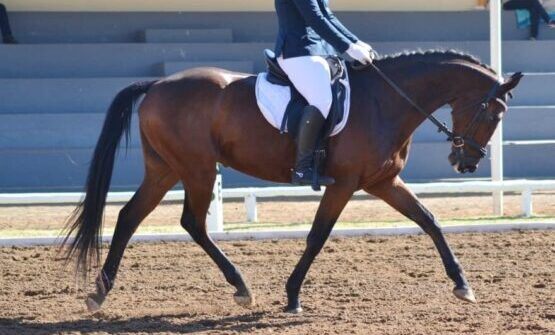
Riding the Test: Execution Elements
The moment has arrived—you’re at X, saluting the judge, and your test has officially begun. Now is when all your preparation transforms into performance, and several key execution elements can elevate your ride from good to exceptional.
Making a Strong First Impression
The Power of the Entry: Your centerline entry sets the tone for your entire test. Ride forward with purpose—judges notice confidence. Keep your horse straight by focusing your eyes on a fixed point beyond C and using your core rather than your hands to maintain alignment.
Perfect Your Halt: A square, immobile halt demonstrates training and obedience. Prepare for it several strides in advance by balancing your horse with half-halts and engaging their hindquarters. Keep your weight evenly distributed in both seat bones and maintain a neutral, upright position.
The First Transition: The movement immediately following your halt often catches riders off-guard. Practice the opening sequence repeatedly so your horse responds promptly to your first forward aid, maintaining the quality established in your entry.
Maintaining Rhythm and Balance Throughout
Consistent Tempo: Rhythm errors are among the most common score reducers. Establish a clear mental metronome for each gait and continuously check that you’re maintaining it, especially during directional changes and before transitions.
Transitions as Opportunities: View each transition as a chance to impress rather than merely a way to change gaits. Prepare transitions at least 3-5 strides in advance, using half-halts to balance and engage your horse while maintaining forwardness.
Corner Work: Corners are the unsung heroes of test riding. Use them strategically to rebalance, prepare for upcoming movements, and demonstrate your horse’s suppleness. A well-ridden corner shows the judge your attention to detail even when not performing a scored movement.
Geometry Matters: Accurate figures differentiate polished rides from average ones. Know exactly where movements begin and end in relation to letters. For circles, visualize four points that create your circle’s circumference rather than just riding around a letter.
Managing Nerves During the Test
Recovery Strategies: Even in the best tests, moments go awry. Develop a three-second recovery plan: breathe, rebalance, and continue. Dwelling on mistakes only compounds them—judges reward riders who can smoothly recover and move forward.
Focus Techniques: Establish a process for regaining concentration if your mind wanders. Some riders repeat a grounding phrase or return attention to their breathing. Others focus on feeling a specific part of their position, like their seat bones or lower leg.
Riding Through Distractions: Environmental disruptions are inevitable. Prepare responses for common scenarios: if your horse spooks, return to rhythm first; if outside noise distracts you, redirect focus to your horse’s footfalls; if you blank on the pattern, have a memorization cue ready.
The Power of the Half-Halt: Master the art of the half-halt as your in-test adjustment tool. A well-timed half-halt can fix a multitude of issues from rushing to loss of engagement, giving you a reset button throughout your test.
Breathing Consciously: Tension often manifests as held breath. Establish a breathing pattern that complements your ride—perhaps exhaling during transitions or challenging movements. Oxygen flow helps both your thinking and your physical communication.
The execution phase is where preparation meets opportunity. By focusing on these key elements while maintaining the flexibility to adjust as needed, you transform technical accuracy into artistic expression—the hallmark of truly outstanding test riding.
Technical Excellence
While artistic impression and harmony capture attention, the foundation of high-scoring dressage tests lies in technical precision. Mastering these technical elements creates the framework upon which expressiveness can flourish.
Position and Effectiveness of Aids
Invisible Communication: The hallmark of superior riding is nearly imperceptible aids. Work towards a conversation with your horse that appears effortless to observers while remaining clear and consistent to your mount. The judge should see the result, not the request.
Alignment for Influence: Your position directly impacts your horse’s performance. Maintain vertical alignment from ear to shoulder to hip to heel, especially during lateral movements where the tendency to collapse or lean can compromise quality. Remember that your posture affects your horse’s posture.
Independent Seat Development: A truly independent seat allows for precise, isolated aids. Practice riding without stirrups and on the lunge to develop the stability that enables you to use your hands, legs, and seat separately when needed and in harmony when appropriate.
Timing Over Strength: The effectiveness of aids depends more on timing than power. Develop your feel for the horse’s footfalls and learn to time requests with the moment your horse is physically capable of responding. Well-timed subtle aids will always outperform poorly-timed stronger ones.
Accuracy of Movements and Figures
Precision of Placement: Know exactly where movements begin and end according to test specifications. A 10-meter circle isn’t just “smaller than a 20-meter circle”—it touches specific points in the arena that you should be able to visualize clearly.
Corners as Preparation Zones: Treat corners as more than just turns. A well-ridden corner sets you up for the next movement and demonstrates your horse’s throughness. Use the short sides to rebalance and prepare, rather than merely transitioning between long side movements.
Letter Awareness Without Fixation: Develop spatial awareness that allows you to place movements accurately without staring at letters. Looking down or fixating on markers creates tension and misalignment. Instead, use peripheral vision and arena awareness to maintain accuracy.
Lines and Curves: Straight lines should be truly straight, with the horse’s spine aligned with the line of travel. Curved lines should maintain consistent bend throughout, with the horse’s body following the arc of the circle or curve. These fundamentals separate mediocre tests from excellent ones.
Expression and Engagement in Required Movements
Balance Before Brilliance: Prioritize balance and correctness before asking for expression. A balanced, rhythmic trot is preferred to a flashy but irregular one. Build your pyramid of training methodically, knowing that true expression emerges naturally from correct fundamentals.
Engagement Versus Speed: Understand the difference between true engagement and mere forward motion. Engaged gaits show the horse’s back lifting and hindquarters carrying weight, creating the uphill balance prized in dressage. This differs significantly from simply moving quickly.
Deliberate Preparation: Each movement should appear to flow effortlessly from the previous one, but this requires deliberate preparation. Begin preparing for difficult movements several strides in advance, using half-halts and subtle positioning to set your horse up for success.
Consistency Through Transitions: Maintain the quality of gaits through transitions. The trot following a transition should match the trot before it in terms of energy, balance, and frame. Transitions that preserve or enhance quality receive higher marks than those where quality diminishes.
Maintaining Consistent Contact and Frame
Elastic Connection: Develop an elastic contact that allows for subtle adjustments while maintaining a consistent feel. The horse should reach comfortably toward the bit, creating a connection that is neither rigid nor fluctuating.
Frame Appropriate to Level: Present your horse in a frame appropriate to their training level and physical development. Forced collection or artificial headsets are penalized more severely than honest work at a more modest level of collection.
Stability Through Difficulty: The true test of contact comes during challenging movements. Work toward maintaining the same quality of connection during lateral work, transitions, and extensions as you have in basic gaits.
The Releasing Test: Periodically test your contact by slightly releasing the reins forward. Your horse should maintain their carriage momentarily, indicating self-carriage rather than dependence on your hands for frame.
Technical excellence forms the canvas upon which artistry is painted. By developing these fundamental skills to a high standard, you create the conditions where expression, harmony, and brilliance can emerge naturally, elevating your test from technically correct to truly captivating.
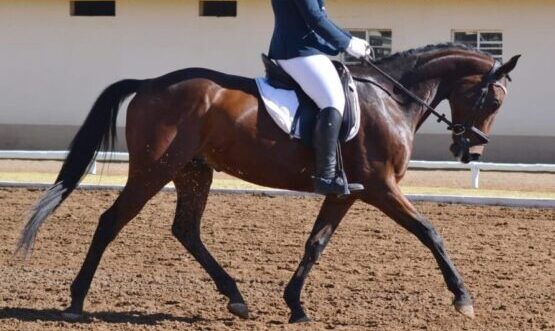
The Artistic Elements
Beyond technical precision lies the realm where dressage transcends sport and becomes art. These elements transform a correct test into a memorable performance and often make the difference between placing and winning.
Developing Harmony and Partnership
Invisible Conversation: The highest expression of dressage is when horse and rider appear to share a single mind. Work toward a partnership where your horse responds to your thoughts rather than obvious aids. This takes time to develop but creates magical moments in the arena.
Matched Energy: Align your energy with your horse’s temperament. A sensitive horse paired with a strong rider often shows tension, while a bold horse with a timid rider appears disconnected. Find the balance where your energy enhances rather than contradicts your horse’s natural expression.
Trust Through Consistency: Build trust by being predictable in your requests and fair in your corrections. Horses that trust their riders are willing to try difficult movements and recover quickly from mistakes. This trust is visible to judges and enhances the overall impression of partnership.
Dancing With, Not Driving: The difference between commanding a horse through a test and dancing with them is subtle but significant. Allow your horse to contribute their balance, rhythm, and expression rather than micromanaging every stride. This collaborative approach creates flow that judges reward.
Creating the Impression of Effortlessness
Preparation That Disappears: Master the art of invisible preparation. While technical riders prepare visibly for each movement, artistic riders embed preparation so seamlessly that transitions and movements appear spontaneous yet perfect.
Breathing With Your Horse: Synchronize your breathing with your horse’s movement and key moments in your test. Exhaling during transitions helps both of you release tension and creates a visual harmony that enhances the impression of effortlessness.
The Power of Stillness: Develop the discipline to sit quietly when appropriate. Excessive movement distracts from your horse’s performance and suggests struggle rather than ease. A still upper body with subtle, effective aids creates an impression of effortless communication.
Recovery Without Drama: When mistakes occur—and they will—recover without obvious correction. The ability to subtly redirect without tension or disruption to the flow preserves the artistic impression even through imperfect moments.
Showcasing Your Horse’s Best Qualities
Strategic Emphasis: Identify your horse’s strongest attributes and structure your ride to highlight them. If your horse has spectacular extensions but average collection, create moments where the extensions can shine while presenting collection competently but without unnecessary flourish.
Customized Interpretation: While test patterns are fixed, interpretation allows for personalization. Ride transitions where your horse performs them best within the allowed space. Adjust your preparation to complement your horse’s learning style and physical strengths.
Appropriate Expression: Present your horse’s natural expressiveness in its best light. Not every horse has extravagant movement, but every horse can show engagement, willingness, and harmony appropriate to their conformation and training level.
Managing Weaknesses: Address weaker movements honestly but strategically. Rather than drawing attention to difficulties with obvious preparation or tension, approach challenging elements with the same confident presentation as your strengths.
Building to a Memorable Final Centerline and Halt
Strategic Energy Management: Plan your energy use throughout the test to ensure your horse remains fresh and engaged for the final movements. Many tests are lost when fatigue causes the quality to deteriorate in the closing sequences.
The Lasting Impression: Your final centerline deserves special attention in training. Judges remember the last thing they see, making your exit as important as your entrance. Practice a straight, powerful final centerline and square, immobile halt until they become signature elements of your performance.
Framing the Experience: Create a sense of completion by subtly referring back to your entry. If you began with confidence and presence, maintain these qualities through to your final salute, creating a cohesive artistic frame around your performance.
The Power of the Pause: Before your final salute, take a barely perceptible moment to settle. This brief pause shows control and confidence, suggesting that you’ve completed your test exactly as intended rather than simply reaching the end.
The artistic elements of test riding cannot be manufactured in the moment but must be cultivated through thoughtful training and a genuine connection with your horse. By focusing on these aspects alongside technical excellence, you create performances that remain in judges’ minds long after you’ve left the arena—the true mark of a winning ride.
After the Test: Learning and Improvement
The moments after your test provide valuable opportunities for growth that many riders overlook. A systematic approach to post-test analysis transforms each competition experience into a stepping stone toward excellence.
Analyzing Judge’s Comments Effectively
Beyond the Numbers: Look past the raw scores to understand the patterns in your feedback. Are comments consistently addressing a particular aspect of your riding, such as connection or bend? These patterns reveal your most impactful improvement opportunities.
Translator’s Mindset: Learn to decode judge’s shorthand and terminology. “More engaged” might actually mean “half-halt before transitions,” while “lacks expression” could indicate insufficient preparation time before movements. Consult with trainers to interpret feedback within the context of your specific horse and level.
Prioritize Impact: Not all feedback carries equal weight. Focus first on comments that affect multiple movements or fundamental qualities. Addressing issues with straightness or rhythm will improve your entire test, while fixing a single transition might only impact one score.
Compare Multiple Perspectives: When possible, collect feedback from different judges across several tests. Look for consensus to identify your genuine patterns rather than fixating on one judge’s preference. The areas where multiple judges agree represent your clearest opportunities.
Video Review Techniques
Systematic Analysis: Develop a structured approach to video review. First watch your entire test without pausing to absorb the overall impression. Then analyze specific elements: accuracy of figures, quality of gaits, effectiveness of transitions, and your position throughout.
Side-by-Side Comparison: Create split-screen comparisons between your test and exemplary riders at your level. This visual reference helps identify subtle differences in execution that might not be apparent through scores alone.
Technical Freeze-Frames: Use pause and slow-motion features to examine critical moments like transitions, half-halts, and the beginning of lateral movements. Look for preparatory aids, timing, and your horse’s response to better understand cause and effect in your communication.
Position Check Points: Establish several standard positions in the arena where you’ll evaluate your position in every test video. This consistent reference point helps track improvements in your alignment, effectiveness, and overall presentation over time.
Creating a Strategic Improvement Plan
Targeted Practice Sessions: Design focused training exercises that address specific feedback rather than simply riding through tests repeatedly. If judges note weak medium trot, develop a progressive program to improve your horse’s push and your timing.
Skill Progression Timeline: Create a realistic timeline for improvement based on the complexity of the issue and your training frequency. Some elements can transform in weeks with focused attention, while others may require months of systematic development.
Connect With Specialists: Consider consulting specialists for specific challenges. A good biomechanics coach might transform your position issues, while a horse fitness expert could address development areas in your horse’s physical capabilities.
Limited Focus Approach: Resist the temptation to fix everything simultaneously. Select 2-3 priority areas that will create the biggest impact, and address them thoroughly before moving to the next priorities. This focused approach yields faster and more sustainable improvements.
Setting Realistic Goals for Your Next Test
Progressive Measurement: Establish incremental goals that acknowledge the step-by-step nature of improvement. Rather than simply aiming for higher scores, target specific aspects: “maintain consistent bend through all circles” or “improve half-halt timing before transitions.”
Process Over Outcome: Focus on execution goals rather than placing goals. You can control how accurately you ride your figures or how effectively you prepare transitions, but you cannot control who else enters the class or how judges will score on a given day.
Celebrate Small Wins: Recognize and appreciate incremental improvements, even when they don’t immediately translate to dramatically higher scores. Noticing and celebrating progress maintains motivation through the inevitable plateaus in your development.
Recalibrate Regularly: Review and adjust your goals as you gather more competition experience. Your initial objectives might prove too ambitious or too conservative as you better understand your partnership’s learning curve and competitive environment.
The post-test phase often determines how quickly you progress as a competitive rider. By approaching each test as a learning opportunity rather than merely a performance evaluation, you transform competition from a stress-inducing judgment into a valuable component of your development journey. The most successful riders aren’t necessarily those who never make mistakes—they’re the ones who learn most effectively from each experience.
Conclusion
The journey toward dressage excellence is continuous, with each test offering new insights and opportunities for growth. As you apply the strategies outlined in this guide, remember that mastery comes not from perfection, but from the persistent pursuit of harmony between horse and rider.
Key Takeaways for Test Excellence
The foundation of test success begins long before competition day. Thorough preparation—understanding your test intellectually, training strategically, and developing both mental and physical readiness—creates the platform from which excellence can emerge. This preparation extends beyond riding skill to encompass all aspects of test management from equipment preparation to mental fortitude.
Technical precision remains the cornerstone of impressive performances. Your position, effectiveness of aids, accuracy of figures, and maintenance of consistent gaits and frame combine to create the structure upon which artistic expression can flourish. Without this technical foundation, even the most naturally talented horse cannot shine consistently in the dressage arena.
Equally important are the artistic elements that elevate technically sound rides to memorable performances. The subtle conversation between horse and rider, the impression of effortlessness, and the strategic presentation of your horse’s strongest attributes contribute to that elusive “wow factor” judges remember when determining final placings.
Perhaps most critical is what happens after the salute—the systematic analysis of feedback, video review, and creation of targeted improvement plans that transform each test into a stepping stone toward greater achievement. The riders who progress most rapidly are those who view competition primarily as a learning opportunity rather than merely a judgment.
The Journey of Continuous Improvement
Dressage mastery is never complete. Even Olympic champions continue to refine their skills, develop deeper connections with their horses, and discover new dimensions of this classical art. Embrace this never-ending journey, understanding that each competition offers unique gifts of insight when approached with curiosity and openness.
Progress in dressage rarely follows a straight line. Expect periods of plateau and even occasional regression as you integrate new skills or advance to more challenging levels. These moments, while frustrating, often precede breakthrough performances when approached with patience and systematic training.
Remember that improvement often happens beneath the surface before becoming visible in test scores. Trust the process of development, recognizing that the foundations you’re building today create the possibilities for tomorrow’s brilliance.
Enjoying the Process While Pursuing Excellence
Amidst the precision and discipline of dressage, don’t lose sight of the joy that drew you to this art. The privilege of partnering with these magnificent animals, the satisfaction of subtle communication, and the thrill of harmony achieved—these are the true rewards that sustain dedicated dressage riders through challenges.
Competition serves a purpose beyond ribbons and scores. It provides structure for your training, motivation during difficult phases, and community connection with fellow enthusiasts. Keep these benefits in perspective, using competition as a tool for growth rather than a measure of your worth as a rider.
Finally, remember that your personal journey in dressage is unique. While scores provide useful feedback, the most meaningful measure of success is your own development—the rider you’re becoming through this pursuit, and the partnership you’re creating with your horse. When approached with this perspective, every centerline entry becomes a victory, regardless of the final score.
As you return to the arena for your next test, carry these principles with you. Ride with preparation, precision, and heart. The winning ride isn’t always the one that earns the highest score—it’s the one where horse and rider dance together in that rare moment of perfect understanding, creating art through movement. That experience, more than any ribbon, is the true prize of dressage.
Additional Resources for Dressage Test Excellence
To provide your readers with valuable resources for continuing their dressage education and test preparation, consider including this curated list in your article:
Books and Publications
- “Dressage Test Techniques” by Jane Savoie – Focused specifically on test riding strategy and psychology
- “The Dressage Judge’s Viewpoint” by Anne Gribbons – Insights from an Olympic judge on what catches a judge’s eye
- “Riding Through the Levels on the Peculiar, the Problematic, and the Poetic” by Janet Foy – Real-world advice for riders competing at various levels
- “Dressage for the Not-So-Perfect Horse” by Janet Foy – Strategies for maximizing scores with different horse types
Digital Resources
- Dressage Today Online – Video library with test riding clinics and tutorials
- Dressage Training TV – Subscription service with test analysis from top trainers
- USDF and FEI YouTube Channels – Free test riding examples and educational content
Training Aids
- Equiratings Dressage Data – Performance analytics for strategic test preparation
- Test Pattern Apps – Mobile applications that help with test memorization and visualization
- Dressage TestPro – Interactive test diagrams with timing elements for practice
Educational Opportunities
- USDF “L” Program Auditing – Learn to see tests through a judge’s eyes
- Test Riding Clinics – Specialized clinics focusing exclusively on test preparation and execution
- Ride-a-Test Schooling Shows – Low-pressure environments with immediate feedback
Mental Training Resources
- “The Mind Gym” by Gary Mack – Sport psychology principles applicable to test riding
- Tonya Johnston’s “Inside Your Ride” – Equestrian-specific mental skills training
- Visualization Guides – Structured approaches to mental rehearsal for dressage tests
Online Communities
- Dressage Connect – Forum for test riding questions and strategy discussions
- USDF Connect – Official USDF community with expert webinars on test riding
- Regional Dressage Facebook Groups – Local communities for finding schooling partners
Score Improvement Services
- Professional Test Video Analysis – Remote coaching services specializing in test feedback
- Scribing Opportunities – Volunteer as a scribe to gain insight into judging perspectives
- Test Riding Workshops – Intensive programs focused on specific test levels
These resources span different learning styles and budgets, allowing your readers to find options that best support their individual dressage journeys. Consider organizing them by experience level or specific goals to make them most accessible to your audience.
